21 de septiembre 2020
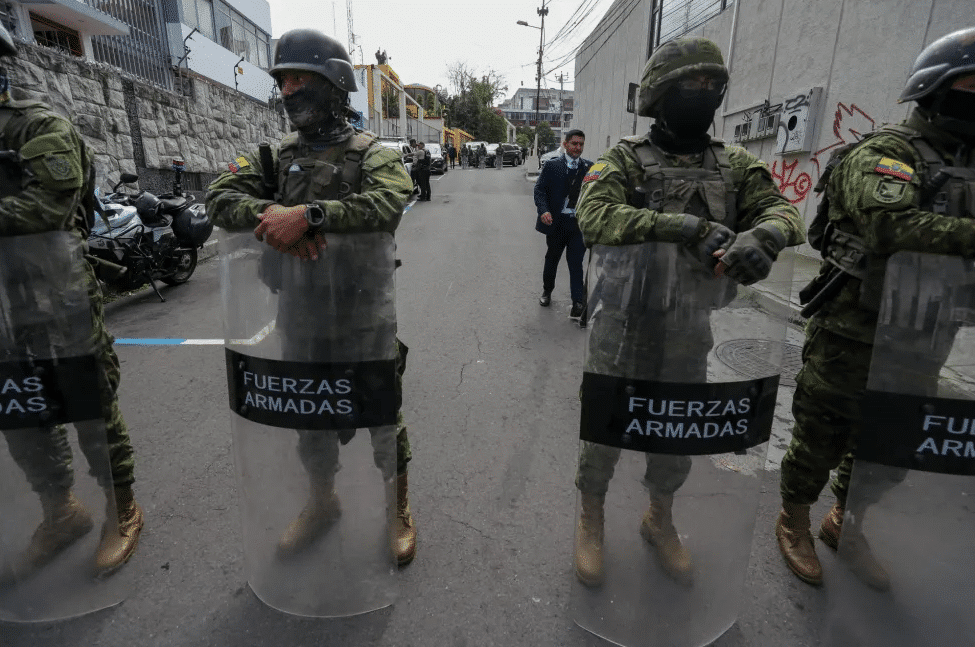
The Return of the Military

PUBLICIDAD 1M
PUBLICIDAD 4D
PUBLICIDAD 5D
“Non-violent movements are more inclusive; but they require greater organization. They fail when the State manages to divide them,” says professor
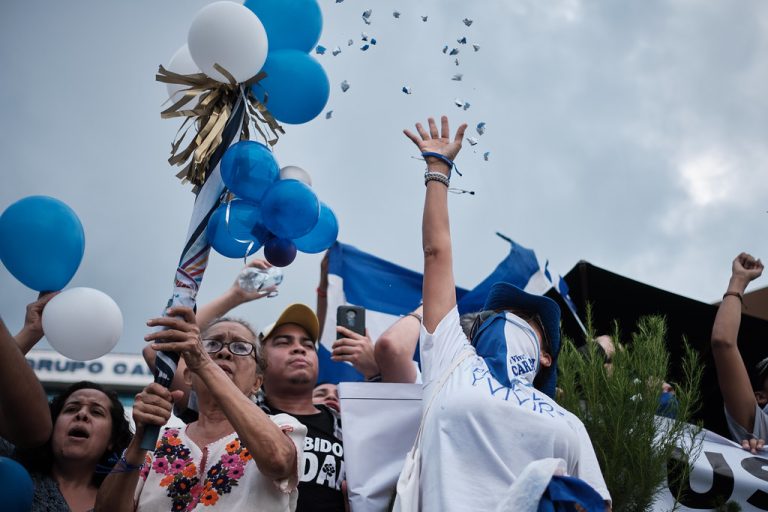
Nicaragüenses protestan contra el régimen de Daniel Ortega. Foto: Archivo/ Carlos Herrera
Violent revolution, or civil resistance? What is the most effective strategy to end a bloody dictatorship and establish a democracy? The failure of the Sandinista revolution, which overthrew the Somoza dictatorship in 1979, taught several generations of Nicaraguans what went wrong. And, since April 2018, a great number of Nicaraguans have been determined to overthrow a new dictatorship through peaceful methods.
World history seems to indicate this is the right path. However, that path does not come without risks, obstacles, and the possibility of failure. "Nonviolent resistance has a greater chance of success, in terms of democratic achievements," says political scientist and professor Erica Chenoweth, one of the leading researchers and experts in the international debate on the subject.
Chenoweth attributes the advantages of “civil resistance” to its ability to generate massive and inclusive movements. These can combine various protest tactics to weaken the repressive State. She warns, though, that nonviolent resistance demands high levels of organization and coordination, almost like a political party.
The professor of International Relations and Human Rights at Harvard University, is the co-author, along with Maria Stephan, of the book “Why civil resistance works”, in which they compare the political outcome of 200 attempts at violent revolutions, and 100 non-violent resistance campaigns, during the twentieth century.
Their conclusion is categorical in favor of non-violent resistance. However, it also delves into the reasons that can lead to the failure of these campaigns. These include division within the movement incited by the repressive State, or their inability to adapt to an electoral process, as it happened in the “Arab Spring”, in Egypt, between 2011 and 2013.
This is the conversation we had with Professor Chenoweth on the Esta Semana television show.
Professor Chenoweth, the research on which your book “Why civil resistance works”, is based on a comparison between the political results of violent revolutions to those of civil resistance movements across many different countries. What are your main conclusions?
The main conclusions are that from 1900 to 2006 movements that relied overwhelmingly on nonviolent resistance were more likely to succeed in basically creating democratic breakthroughs, or creating independent territories through secession or self-determination, than movements that used violent revolutionary tactics.
In addition to that, Maria Stephan and I found that the reason was non-violent movements tend to be much larger and more inclusive of many different sectors of the society than armed revolutions, which tend to be fairly small scale in terms of active participation, and tend not to involve as many people from across society.
How can civil resistance movements be successful when they are facing a brutal dictatorship that uses force and armed repression? What are the key factors of their success?
There are a few different key factors. The first is that nonviolent movements are more likely than violent movements to experience a backfiring dynamic when they do face brutal repression.
This means that across the world it’s a general pattern that brutal force against unarmed people tends to result in defections from security forces, and noncooperation by those that are engaging in repression because they don’t see such repression as justified or in their own personal interest.
It can also be the case that such defections happen even before repression really escalates to a large extent. In fact, most nonviolent campaigns experience much lower intensities of repression than armed campaigns, which actually create very widespread repressive responses from the State.
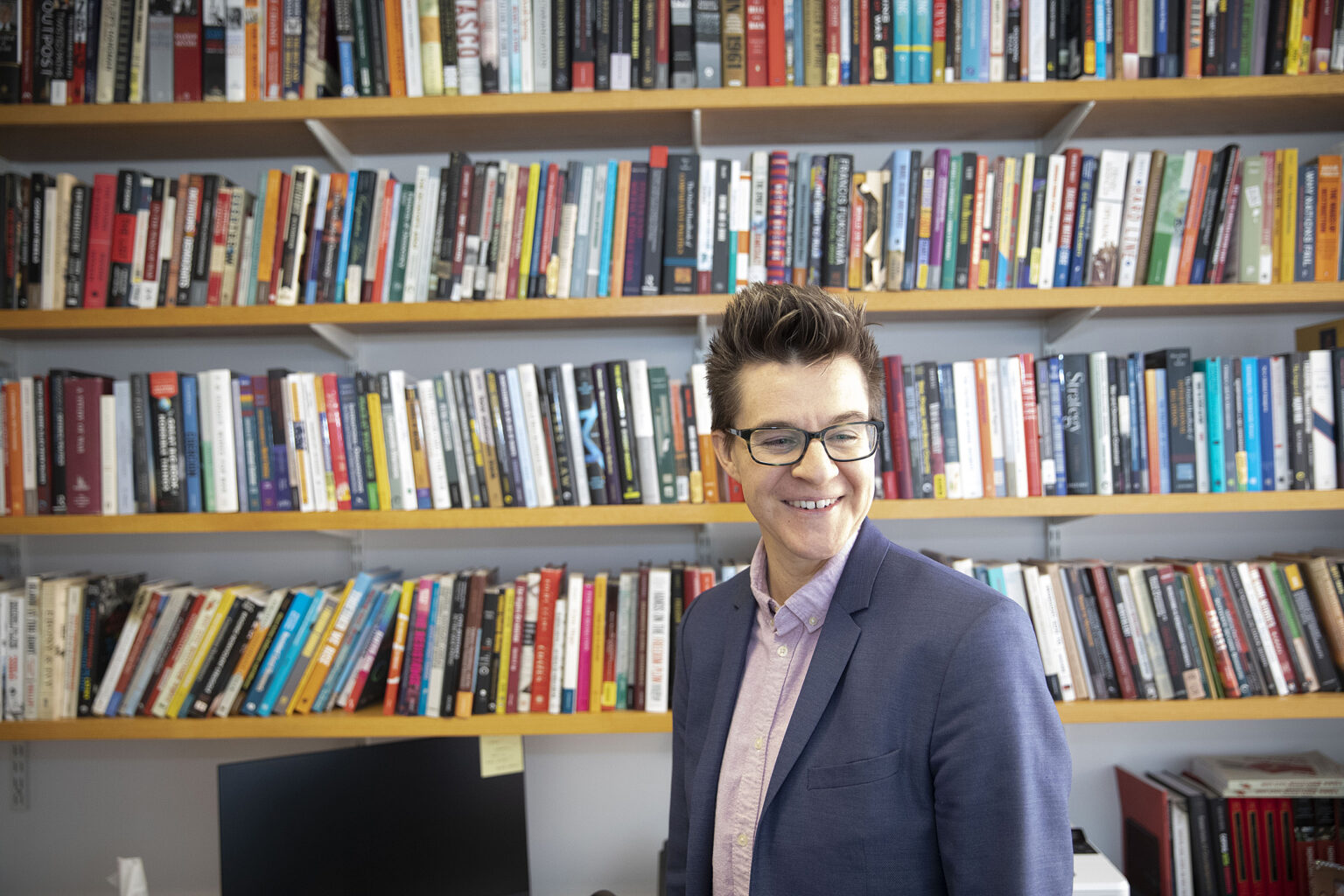
Erica Chenoweth, a political scientist at Harvard University. // Photo: Kris Snibbe / Harvard
Not all civil resistance movements are successful, there are many examples of repression that prevail as widespread massive protests fail to produce political changes. What are the main reasons for those failures?
I think the main reason is that the state was able to divide and rule the movement, more effectively than the movement was able to divide and rule the state.
Civil resistance techniques are fundamentally about making the pillars of the state’s support begin to stop supporting the state; economic and business interests, but also security forces, civil servants, and public servants begin to realize that it’s not in their interest to continue supporting the state. It’s much easier for them to do that when a challenge is based on nonviolent resistance and they recognize that they could have a future in the state.
That is really more of a strategy trying to dislocate and divide the regime, and if the regime actually is better at doing that to the movement by dividing it across different kind of social cleavages, by infiltrating the movement, by provoking the movement into resorting to violence or some of the people within the movement, then the regime is much more likely to succeed in the end.
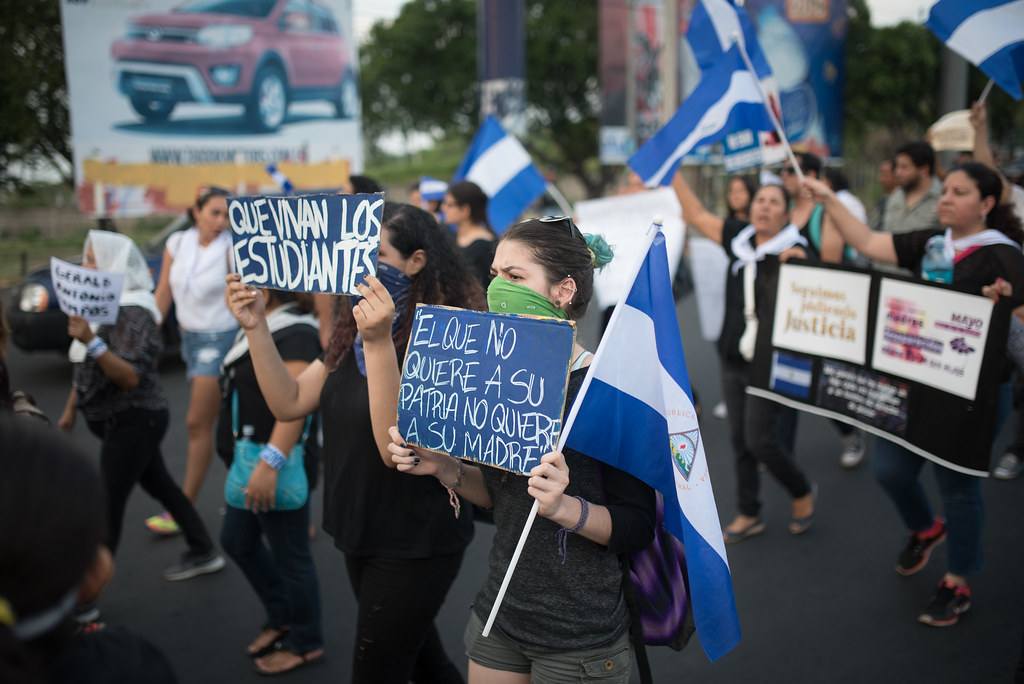
Photo: Carlos Herrera | Confidencial
How is civil resistance organized? How is it different from a protest, from a social movement in general, or pacifism? Is it a movement without national leaders, or autoconvocados, “self-summoned”, as we say in Nicaragua, or does it work as an organized movement, led by activists and political leaders?
Civil resistance is different from protest. Protest is one of many thousands of tactics that are available to movements that use civil resistance.
The most effective civil resistance campaigns use many different methods, like strikes, boycotts, stay away, go-slows, and other forms of mass noncooperation, which are often even more effective than protest alone. Movements that succeed generally around the world were able to coordinate and sequence these methods in a way that increased pressure on the regime, while also making sure that people weren’t constantly exposed to the risk of repression through street demonstrations, for example. So, yes, that requires a certain level of coordination.
It doesn’t necessarily require a single leader, or charismatic leader, or figurehead. But it does tend to require sort of boring day to day political organizing, community organizing, coalition building, and coming up with a sort of united front, so to speak, that can cooperate and coordinate these types of methods over time.
Does that resemble the way in which a political party works? I mean a cadre political party...
It is somewhat similar to a political party, except that political parties are trying to contest power through institutions. For example, they are trying to build this coalition so they can run for office through elections, and essentially take power through constitutional means.
Most civil resistance campaigns, the ones that I study anyway, are operating in systems where such institutional channels are not available to any formal opposition party. And instead, most of these movements are using extra-constitutional means in order to create and achieve power. That doesn’t mean they are closed off to things like negotiation. In fact, many of the different campaigns in the dataset that I’m talking about did hold a series of negotiations with members of the opponent regime.
But it is to say that the movement, successful movements, have kind of created a sense that the change they were bringing about was inevitable, and so it was only to the interests of those in the existing regime to participate in negotiations to find a peaceful long term arrangement politically.
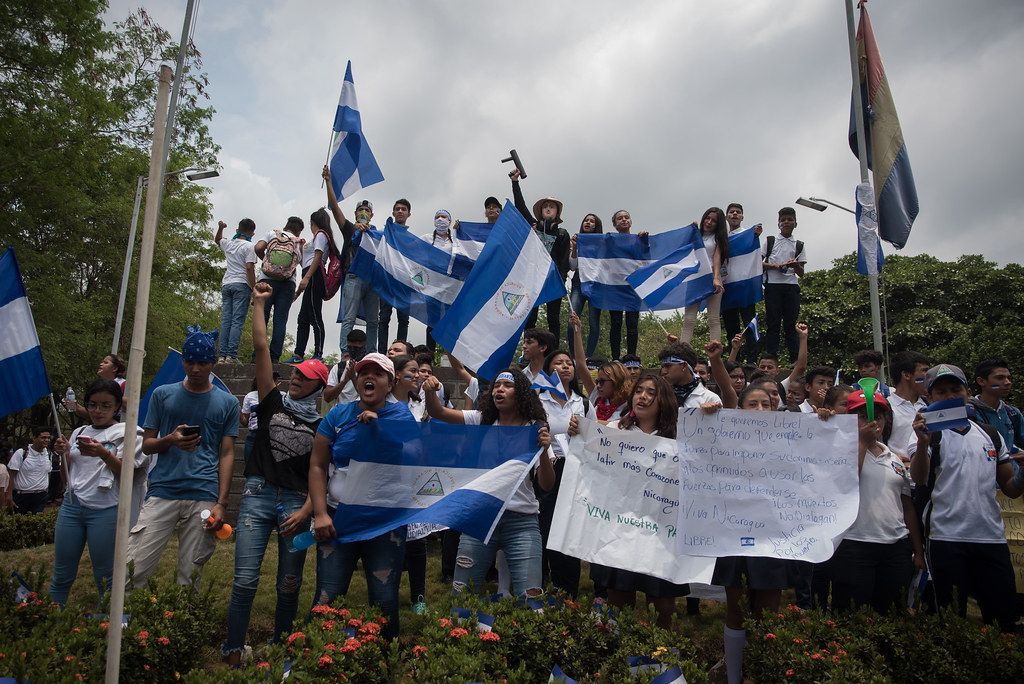
University students protesting against the Daniel Ortega regime back in 2018. Photo: Carlos Herrera | Confidencial
If the objective of civil resistance is to overthrow an authoritarian regime, or to ensure adequate reforms and conditions for instance for a legitimate election, how can a movement that is not a political party or is not legally permitted to participate in an electoral process, how can a resistance movement adapt to an electoral process?
That’s a good question. Some movements don’t successfully adapt to an electoral process, and so in these types of situations, if a movement succeeds but doesn’t find a way to organize itself into a meaningful political party, then we’ve seen counterrevolutions or, a kind of resurgence of the old status quo.
This is true in the Egyptian case, for example, if you think about 2011 to 2013. The opposition succeeded in forming what we call a negative coalition, meaning Mubarak go, but they didn’t actually then successfully create a positive coalition of what is going to replace this old system. The military stepped back two years later.
You can compare this to Tunisia, wherein Tunisia, similar timing, similar negative coalition trying to get Ben Ali out of office, but then they spent really 3, 4, 5 years in very difficult and painful negotiations that were kind of broadly representative of many different sectors of the society, in order to hammer out the new constitution and new political parties that were competing and we are cautiously optimistic about the fact that Tunisia has emerged from this total crisis in a relatively peaceful and stable situation.
I think it’s very difficult, but good faith efforts on the part of the opposition and members of the regime can pay off after some steady commitment.
How large and diverse are successful civil resistance movements? Are we talking about national unity kind of movements? How can the dilemma of the participation of sectors like business sectors, or others that have been part of the establishment, which fear the social instability which is associated with protests as well as participating in coalitions that they do not fully control, how can this dilemma be addressed?
A very difficult problem. And, as I said, these types of dilemmas historically are not negotiated in the streets, but rather are kind of dealt with day by day through organizing and good steady leadership.
There is always a problem with a diverse coalition becoming unwieldy, and potentially becoming co-opted or hijacked by special interests. But this is not an unfamiliar problem, this is just true about all politics.
To the degree to which there can be coordinated leadership that is accountable to different sectors of the participant base through some kind of leadership structure that’s a coalition based or coordination council, the more likely these problems are to be addressed through the campaign.
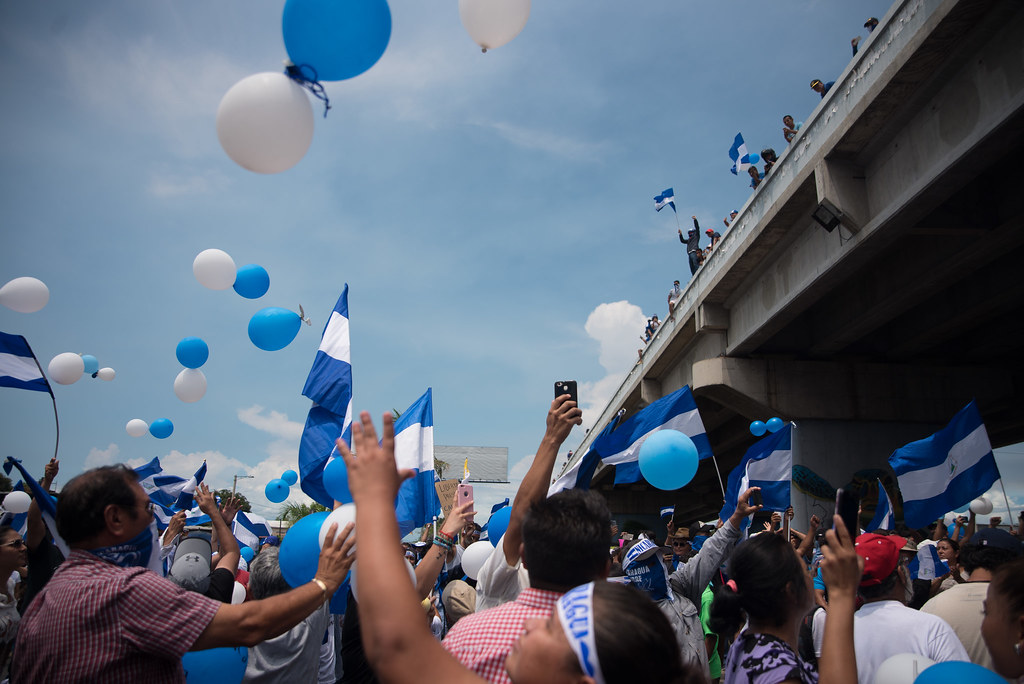
Photo: Carlos Herrera | Confidencial
In the different experiences that you have studied, what roles do technology and the use of social media play in these movements in terms of connecting and organizing people? Can digital activism compensate or substitute offline social and political mobilization?
I think there was a time when digital activism was compensating for the lack of material or physical organizing space, and that time passed about 10 or 15 years ago. Now I think social media is more or less a way to continually divide movements, and to surveil them, to infiltrate them, to use misinformation against them, or at least to essentially segment information flows to where there are genuinely two different realities and a deeply divided country.
This is something that’s happening in the United States. I can speak from our experience, to where the effects of social media, intentional or not, are to create two different lived realities in this country, with very little common ground, and that is not a good thing, either for democratic progress, for people’s wellbeing or for the prospects for effective organizing that can bridge these divides.
How does civil resistance adapt in the face of differing intensities of repression? Can civil resistance work in the face of brutal repressive regimes willing to use unrestricted lethal military force against unarmed civilians?
About 90% of the cases of nonviolent resistance in my data set did face lethal repression and force from their opponents. About half of them succeeded in the end even though there was this lethal repression, and sometimes the lethal repression is exactly what galvanized mass mobilization and support for these movements.
The question is, what are the alternatives? Nobody would ever argue, especially myself, that civil resistance is a risk-free proposition. Threatening power usually results in some casualties, but the question is, compared to what? What are the other alternative methods of trying to seek social and political change?
We know from historical cases of armed revolution for example, that the cost to human life is much higher than in almost any civil resistance campaign. I think the average civil resistance campaign suffers something like 22 times fewer deaths per year than the average armed insurgency. If a person thinks about it that way, it’s a less costly method but not a costless method.
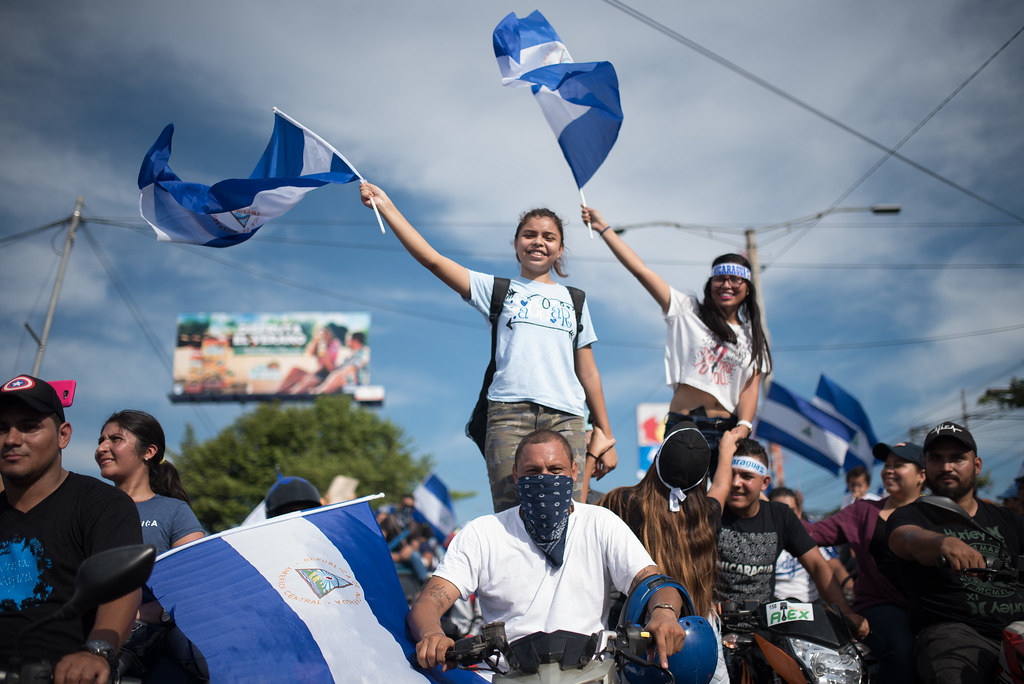
Photo: Carlos Herrera | Confidencial
But even dictatorships have their own quota of support from a given political base. They also have the advantage of State, political party, and repressive apparatus control. How far can a dictatorship hold to power without collapsing?
We don’t know, and it’s different in every case, depending on the type of dictatorship, depending on the level of loyalty that the particular leader has from various arms of the state, and various other sectors of society that support the state.
So, we don’t know, but one thing I can say is that we also don’t know the true level of opposition at any given point because most people don’t walk around every day expressing how they fell today at this moment about the regime.
Some people do, but mostly in key moments of crisis many people are often surprised by how many people turn out in opposition to a regime, in a way that seems surprising and unexpected, but then in retrospect, people say it was inevitable.
For example, in Tunisia, in Egypt, in Sudan a year and a half ago, these were regimes that had been in power for decades. Sudan in particular was a regime that had been in power for 30 years and was led by someone who had committed genocide against part of the population, among many other crimes, and then all of a sudden, the world discovered, that his regime was far more fragile than anyone knew, because of the people power challenge that grew in size and in force over the course of a few months, despite the fact that there were brutal crackdowns throughout the entire period.
So, the answer is we don’t know, but there are reasons to not believe the lie that all regimes are immutable and permanent and invulnerable.
You mentioned before about strategies to weaken a regime from within, but how can a regime be weakened from within, when it is being threatened by a movement for change? How do we reach that moment in which the police or the army decide that they can no longer continue with the repression?
It’s a good question and it’s hard to know exactly. Again, in each case there are differences. But, generally speaking, there are two things that come to mind. The first is, a movement that grows in its size and its diversity is more likely to create situations where there are direct social connections between the participants and members of the police or military, and that those personal connections begin to matter, especially as they grow in number.
The second thing I would say about it is that sometimes it’s the case that the police and security forces never defect, for one reason or another they are simply too committed to the regime to ever defect.
This was the case in South Africa during the anti-apartheid struggle for example. The security forces were never going to defect to the black townships. Instead, that movement, the anti-apartheid movement, focused pressure on economic and business elites, in order to put pressure, through them, on the government to change.
And, in that context, that was really the fundamental pillar whose cooperation made the difference. I think it depends on each place. Sometimes active confrontation with police and security forces is very dangerous and too risky, as it was in South Africa, so it’s unwise sort of for movements to focus on that pillar.
Authoritarian regimes often disqualify civil resistance as a conspiracy financed from abroad, from the US, from the European Union, and they tend to frame it as a supposed “soft coup”. Can civil resistance be imported or exported so?
No, definitely not. Certainly, there is evidence of cases where there were attempts to try to actively support nonviolent movements, and usually, it backfires badly, because basically it makes the movement unable to claim local roots and local legitimacy.
But actually, these forms of support are much less direct than is commonly cited by many authoritarian regimes, and it’s almost a universal pattern for authoritarian regimes to blame outsiders for their own domestic troubles as a way to try to deflect from the core issues and delegitimize the campaign.
The fact that it is a universal pattern, that it doesn’t matter whether you’re talking about Turkey, Russia, Venezuela or Donald Trump, the fact that all of these leaders say that it’s outsiders who are the cause of their problems rather than their own domestic conflicts, shows that it’s probably not a very credible claim.
There is a relationship between national protests and international pressure or sanctions to isolate dictatorships. How does it work? At least in the cases of Venezuela and Nicaragua, it would seem that many sectors that are worn out by repression expect, too much, political solutions from abroad.
Yeah. I don’t think there’s too much evidence to suggest that, first of all, there are international actors who are in a position to effectively do anything that would help a civil conflict. I think also there are strong reasons morally why international actors should not kind of posture themselves as imperialists trying to manage the affairs of other states, and that’s especially true when it comes to the United States, which has overreached in this way so many times, causing much destruction and death and devastation as a result.
Civil resistance campaigns are fundamentally about domestic people's power movements that are trying to help to solve real political problems that are affecting people’s lives and livelihoods, and therefore should be managed largely internally in my opinion.
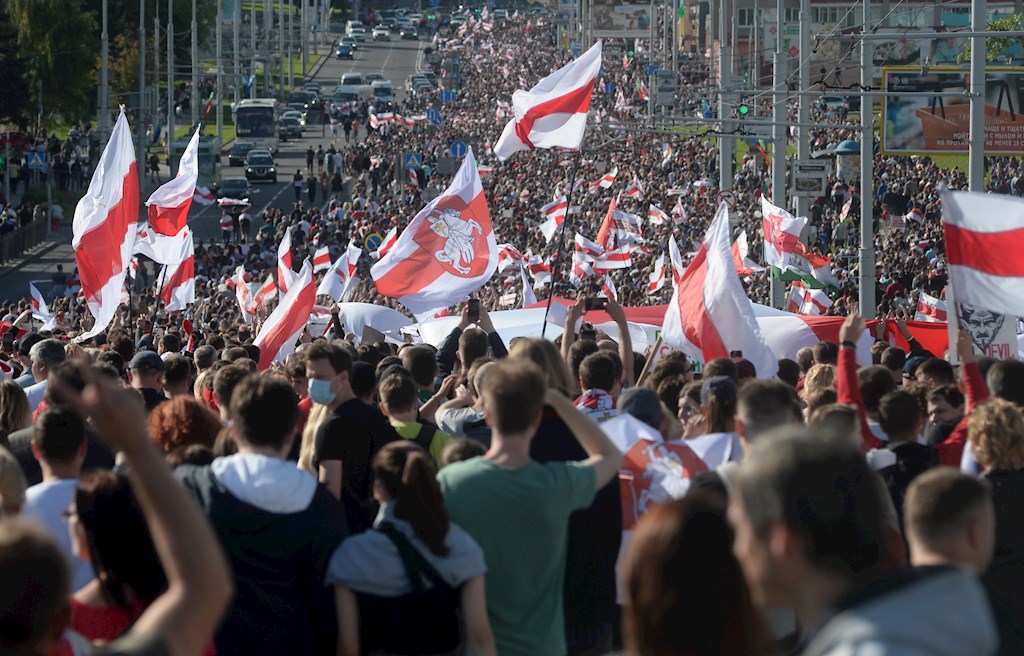
Protesters march during a rally to protest against the presidential election results in Minsk, Belarus, 13 September 2020. Opposition activists continue their every day protest actions, demanding new elections under international observation. Photo: EFE
What can the civil resistance movement in Nicaragua learn from the examples of other countries, like Chile, Hong Kong, Lebanon, Bolivia, Venezuela, Puerto Rico, or Belarus at this moment? Or perhaps other historical examples.
We have hundreds and hundreds of examples from around the world of civil resistance movements that aren’t very familiar because their stories haven’t been told. And, their stories haven’t been told in part because people pay much less attention to episodes where people power movements use nonviolent methods to overturn unjust systems than they do to violent revolutions that fire the imagination and that hold up heroes in our societies.
I’m speaking as an American in the US here, about the sort of mythology of the American Revolution, as being a key point of our history that was so defining, but downplaying all of the incredibly important moments in US history that led to the end of slavery, you know, the end of women’s repression and women achieving the right to vote themselves, and many other cases where what we know is that movements that appeal to a large number of people, because they convince them that it’s in their interest to work with the movement, that rely on nonviolent methods, that stick to their own plan even as repression escalates against them, and are able to coordinate a creative set of methods of nonviolent resistance, tend to be more likely to succeed.
That doesn’t mean they always succeed, but very few progressive changes have ever happened without a civil resistance movement.
In Nicaragua, beyond the police state under which we are living, the Covid-19 pandemic has imposed further restrictions on people’s mobilization. On one hand, the pandemic has damaged the regime’s credibility because of their negligence and propagation of the virus, damaging their own bases of support, but on the other, the opposition has failed to fill the power vacuum. How can civil resistance movements resolve this deadlock?
That’s a good question, and it’s true in many places around the world right now. I think that one of the most interesting things that have happened during this time is the innovation of new tactics that allow people to engage in various forms of socially distant, or physically distant, protest and resistance.
This includes many different kinds of car caravan protests, or casserole protests, where people are banging pots and pans inside their homes. It’s a way to sort of help to build a sense of solidarity and unity during this time.
And many movements around the world are indeed using this time to essentially regroup, strategize, come up with plans for what’s next. The average nonviolent campaign takes about 3 years to run its course, and many movements around the world are not prepared for 3-year struggles when they start out. But moments like this where things like active street protests aren’t as available safely to people, can serve as an opportunity to regroup and re-engage and begin to build those relationships and coalitions that are so important later.
You said before that a civil resistance movement may or may not have to be related to national leaders. What are the roles that leaders can play?
Leaders are important as communicators, both internally within the movement, and externally with the public with whom they’re trying to have a conversation.
The question is how a movement structures its leadership, and whether it is open to having what many feminist scholars call leaderful resistance, which is to say a number of people who are able to captivate the attention of the public and of the movement and are accountable to that movement in how they behave and what they say.
That can really help a movement to navigate or has helped movements to navigate, different periods of stress and distress and repression, in a way that’s made them more effective in the long run.
PUBLICIDAD 3M
Periodista nicaragüense, exiliado en Costa Rica. Fundador y director de Confidencial y Esta Semana. Miembro del Consejo Rector de la Fundación Gabo. Ha sido Knight Fellow en la Universidad de Stanford (1997-1998) y profesor visitante en la Maestría de Periodismo de la Universidad de Berkeley, California (1998-1999). En mayo 2009, obtuvo el Premio a la Libertad de Expresión en Iberoamérica, de Casa América Cataluña (España). En octubre de 2010 recibió el Premio Maria Moors Cabot de la Escuela de Periodismo de la Universidad de Columbia en Nueva York. En 2021 obtuvo el Premio Ortega y Gasset por su trayectoria periodística.
PUBLICIDAD 3D